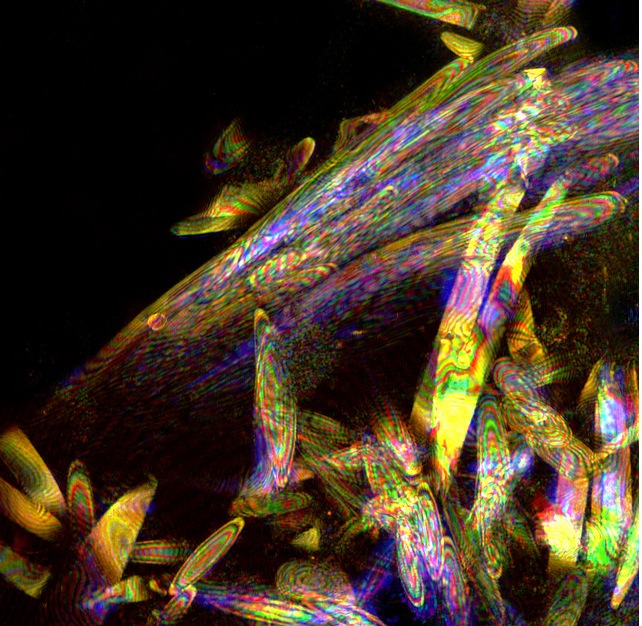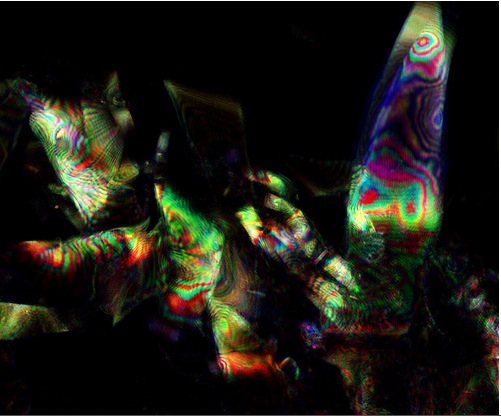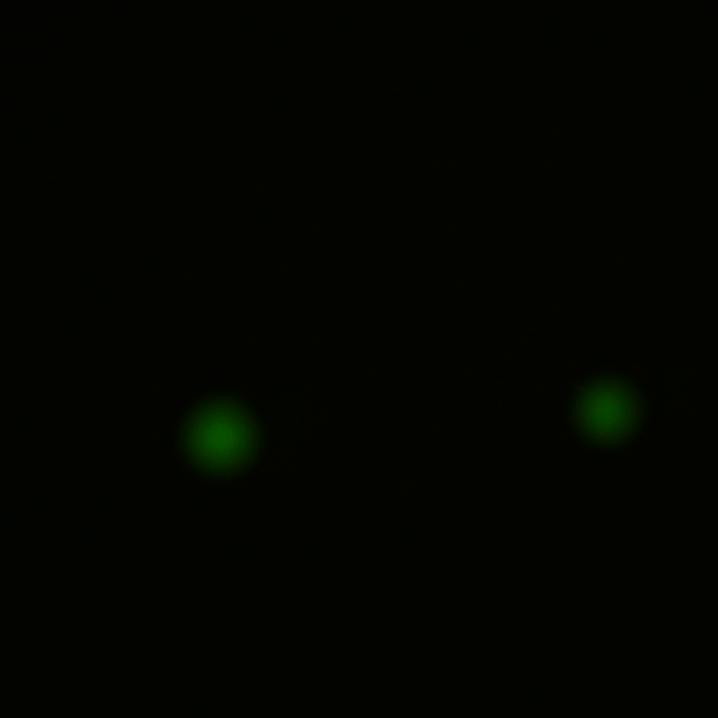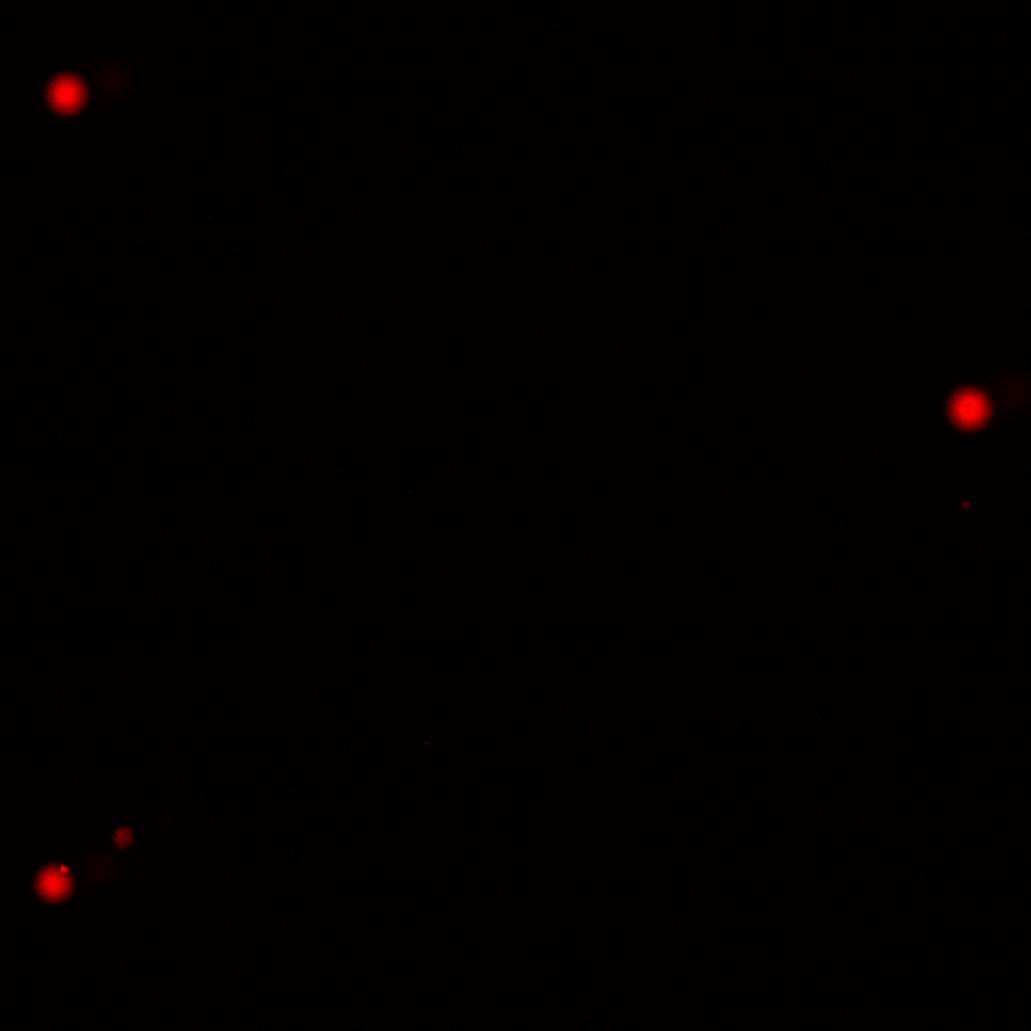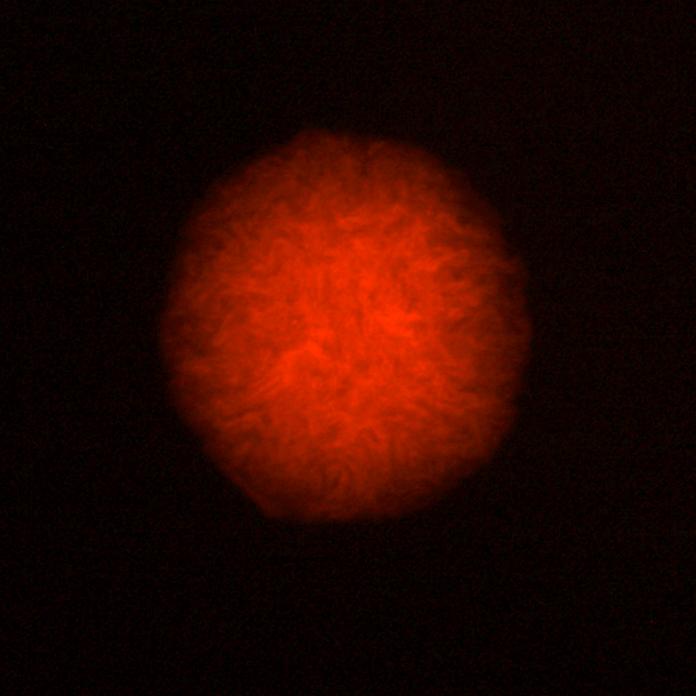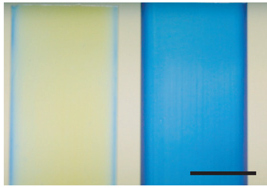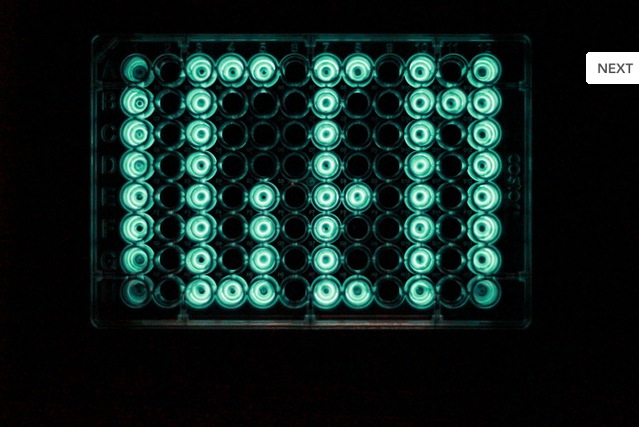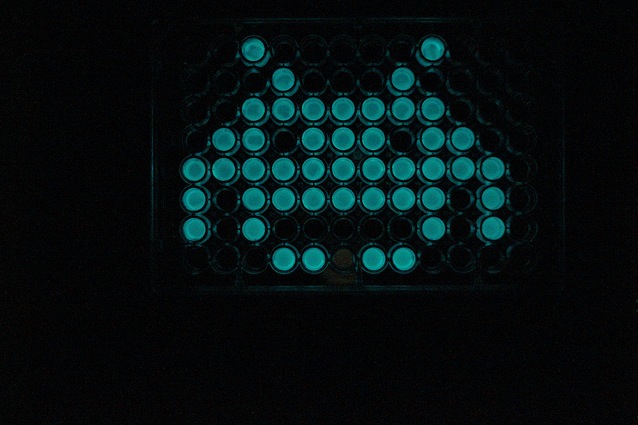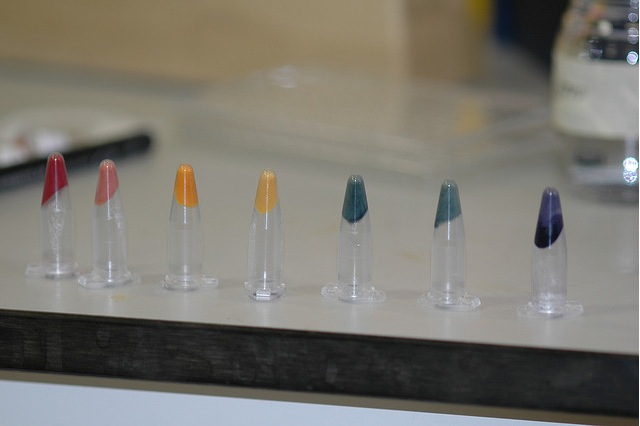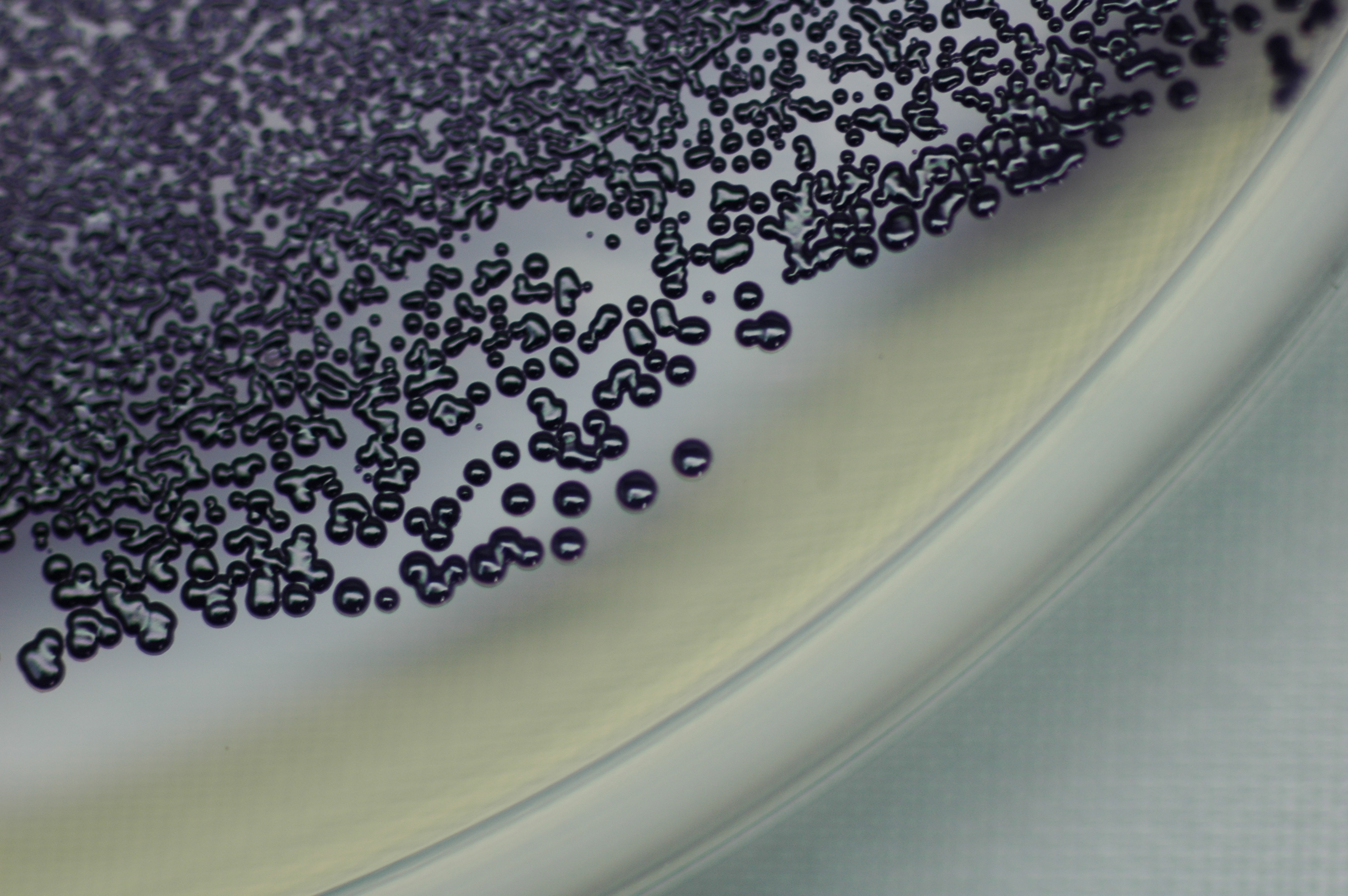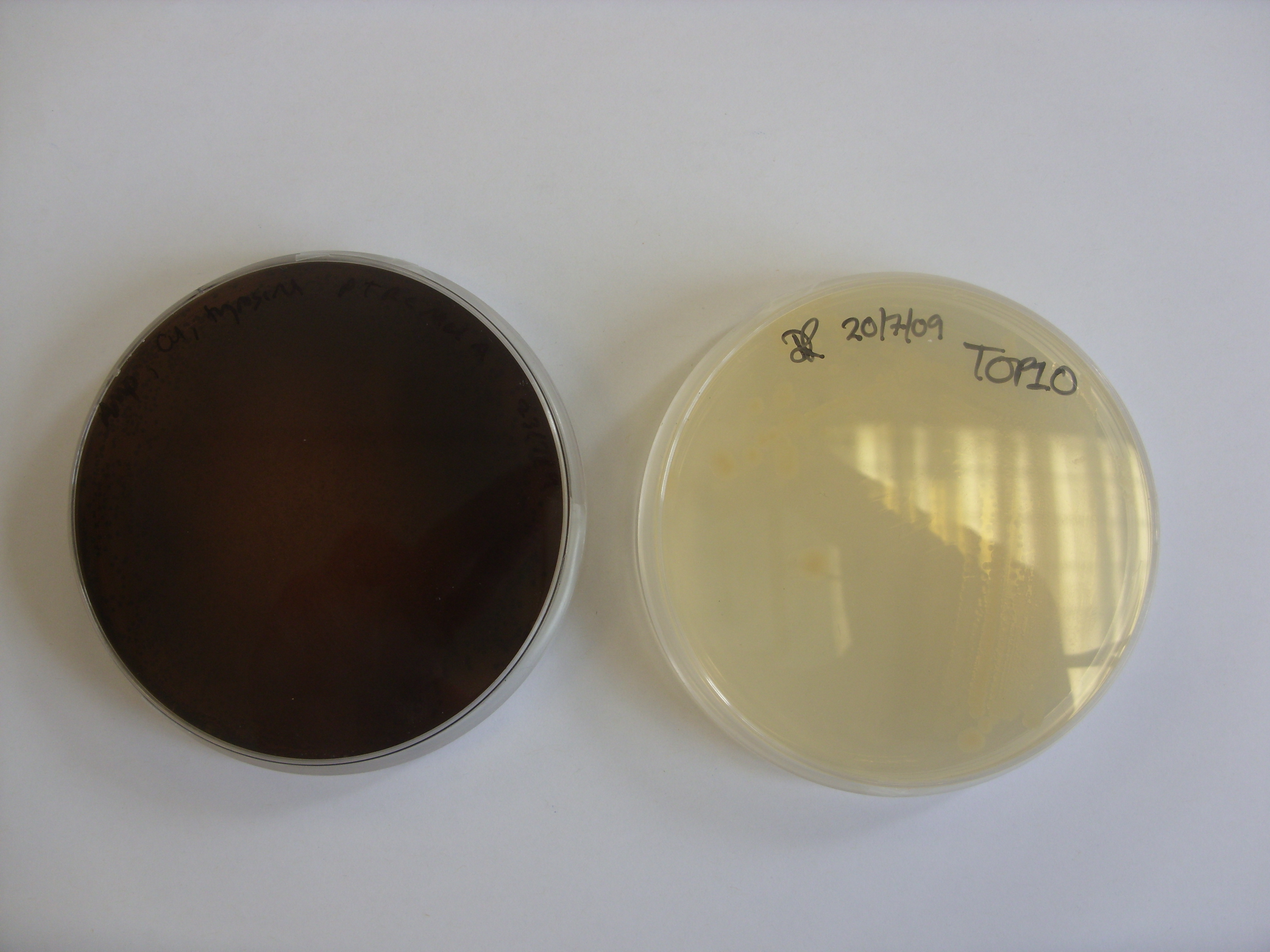Team:Cambridge/Future/Visuals
From 2011.igem.org
(→2010: E. glowli) |
|||
| (4 intermediate revisions not shown) | |||
| Line 5: | Line 5: | ||
==In vivo imaging== | ==In vivo imaging== | ||
| - | + | We experimented with unusual confocal microscopy settings to find a way of best capturing the iridescence and reflective properties of reflectin in cells. See below for images of squid cells we have studied. We hope to achieve similar images from E.coli cells. | |
| - | + | ||
| - | + | ||
| - | + | ||
| - | + | ||
| - | + | ||
| - | + | ||
| - | + | ||
<gallery caption="Reflectin in Loligo pealei and Loligo opalescens (with thanks to Paul Grant and Fernan Federici)" widths=200px heights=200px> | <gallery caption="Reflectin in Loligo pealei and Loligo opalescens (with thanks to Paul Grant and Fernan Federici)" widths=200px heights=200px> | ||
| Line 18: | Line 11: | ||
File:Iridescent cells from around squid eye.jpg | File:Iridescent cells from around squid eye.jpg | ||
File:Squideye reflectin250repeat.gif | A animation of images taken at different depths through squid tissue samples | File:Squideye reflectin250repeat.gif | A animation of images taken at different depths through squid tissue samples | ||
| + | </gallery> | ||
| + | |||
| + | |||
| + | When learning the basic techniques of synbio, we also put together constructs for fluorescent protein expression in E. coli. We will return to GFP as a way to measure the solubility of reflectin, giving similar images to those below. | ||
| + | <gallery> | ||
| + | File:Cam JMFexperiment greencolonies.jpg | GFP in E.coli colonies. | ||
| + | File:Cam_positivecontrolexperiment_redcolonies.jpg | RFP in E.coli colonies | ||
| + | File:Cam positivecontrolexperiment redcolony.jpg | Magnified colony with RFP | ||
</gallery> | </gallery> | ||
| Line 23: | Line 24: | ||
Previous work on reflectin proteins has used purified protein in solution to coat wafers of silicon. This creates the beautiful coloured images seen below. We can alter the final colour depending on the thickness of the layer or the concentration of the protein solution. | Previous work on reflectin proteins has used purified protein in solution to coat wafers of silicon. This creates the beautiful coloured images seen below. We can alter the final colour depending on the thickness of the layer or the concentration of the protein solution. | ||
| - | [[File:CAM_THIN_FILM.jpg | thumb | Thin films cast from different concentrations of reflectin (from Kramer ''et al'')]] | + | [[File:CAM_THIN_FILM.jpg | thumb | 400px | left| Thin films cast from different concentrations of reflectin (from Kramer ''et al'')]] |
As part of our collaboration with nanophotonics, we have a number of techniques we plan to use in order to create different optical structures. For example, we aim make diffraction gratings, which will reflect light from across the spectrum (rather than the narrow range reflected by thin films). Reflectin appears to spontaneously form diffraction gratings on exposure to different solvents. We will also try layering reflectin with another polymer, to create a stacked structure which will give more intense colour due to additive effect of interference patterns. | As part of our collaboration with nanophotonics, we have a number of techniques we plan to use in order to create different optical structures. For example, we aim make diffraction gratings, which will reflect light from across the spectrum (rather than the narrow range reflected by thin films). Reflectin appears to spontaneously form diffraction gratings on exposure to different solvents. We will also try layering reflectin with another polymer, to create a stacked structure which will give more intense colour due to additive effect of interference patterns. | ||
| + | [[File:Cam Pixels.jpg | thumb | 250px | Pixel made from a reflectin-inspired biopolymer, which changes colour when voltage is applied to an electrolyte (Walish ''et al'', Advanced Materials 2009)]] | ||
To build upon the work that has been done by researchers investigating reflectin, we hope to prove the feasibility of using these proteins as the next generation of flexible optical devices. Reflectin in cephalopods can give a range of colours based on dynamically changing the spacing of the protein assemblies, due to the charge differences caused by addition of phosphates. We already know that the colour of a thin film can be altered by exposure to different solvent vapours (from blue to red, for example), and we are also planning to explore the interactions of reflectins with electricity in order to replicate the in vivo dynamism. | To build upon the work that has been done by researchers investigating reflectin, we hope to prove the feasibility of using these proteins as the next generation of flexible optical devices. Reflectin in cephalopods can give a range of colours based on dynamically changing the spacing of the protein assemblies, due to the charge differences caused by addition of phosphates. We already know that the colour of a thin film can be altered by exposure to different solvent vapours (from blue to red, for example), and we are also planning to explore the interactions of reflectins with electricity in order to replicate the in vivo dynamism. | ||
We hope to build a prototype of a non-backlit screen which reflects incident light of different colours, based on these potential methods for changing structural colour. | We hope to build a prototype of a non-backlit screen which reflects incident light of different colours, based on these potential methods for changing structural colour. | ||
| - | |||
=Previous iGEM projects= | =Previous iGEM projects= | ||
| Line 40: | Line 41: | ||
Last year's team focused on light production from bacteria, creating cultures bright enough to illuminate a book in the darkroom. | Last year's team focused on light production from bacteria, creating cultures bright enough to illuminate a book in the darkroom. | ||
| - | <gallery> | + | <gallery widths=250px height = 250px> |
File:Igem in lights.jpg | File:Igem in lights.jpg | ||
File:Cam Reading books by bacteria.jpg | File:Cam Reading books by bacteria.jpg | ||
File:Cam Space invader lights.jpg | File:Cam Space invader lights.jpg | ||
</gallery> | </gallery> | ||
| - | |||
| - | |||
===2009: E. chromi=== | ===2009: E. chromi=== | ||
Latest revision as of 15:13, 16 August 2011
As this project is based around colour and light interactions, our characterisation experiments are set up to provide visual results in every facet of the project.
Contents |
In vivo imaging
We experimented with unusual confocal microscopy settings to find a way of best capturing the iridescence and reflective properties of reflectin in cells. See below for images of squid cells we have studied. We hope to achieve similar images from E.coli cells.
Squideye reflectin250repeat.gif
A animation of images taken at different depths through squid tissue samples |
When learning the basic techniques of synbio, we also put together constructs for fluorescent protein expression in E. coli. We will return to GFP as a way to measure the solubility of reflectin, giving similar images to those below.
In vitro photonic devices
Previous work on reflectin proteins has used purified protein in solution to coat wafers of silicon. This creates the beautiful coloured images seen below. We can alter the final colour depending on the thickness of the layer or the concentration of the protein solution.
As part of our collaboration with nanophotonics, we have a number of techniques we plan to use in order to create different optical structures. For example, we aim make diffraction gratings, which will reflect light from across the spectrum (rather than the narrow range reflected by thin films). Reflectin appears to spontaneously form diffraction gratings on exposure to different solvents. We will also try layering reflectin with another polymer, to create a stacked structure which will give more intense colour due to additive effect of interference patterns.
To build upon the work that has been done by researchers investigating reflectin, we hope to prove the feasibility of using these proteins as the next generation of flexible optical devices. Reflectin in cephalopods can give a range of colours based on dynamically changing the spacing of the protein assemblies, due to the charge differences caused by addition of phosphates. We already know that the colour of a thin film can be altered by exposure to different solvent vapours (from blue to red, for example), and we are also planning to explore the interactions of reflectins with electricity in order to replicate the in vivo dynamism.
We hope to build a prototype of a non-backlit screen which reflects incident light of different colours, based on these potential methods for changing structural colour.
Previous iGEM projects
As our project is a natural extension of previous Cambridge teams' efforts with light and pigment-based colour, we would be happy to show some of their finished projects alongside our own work.
2010: E. glowli
Last year's team focused on light production from bacteria, creating cultures bright enough to illuminate a book in the darkroom.
2009: E. chromi
The Grand Prize winning team developed pigment producing bacteria. Members of the Haseloff lab have been asked to create living artwork with these bacteria in the shape of the UN logo for their upcoming bioweapons convention - we would be able to do the same for the Horizon Logo.
 "
"

